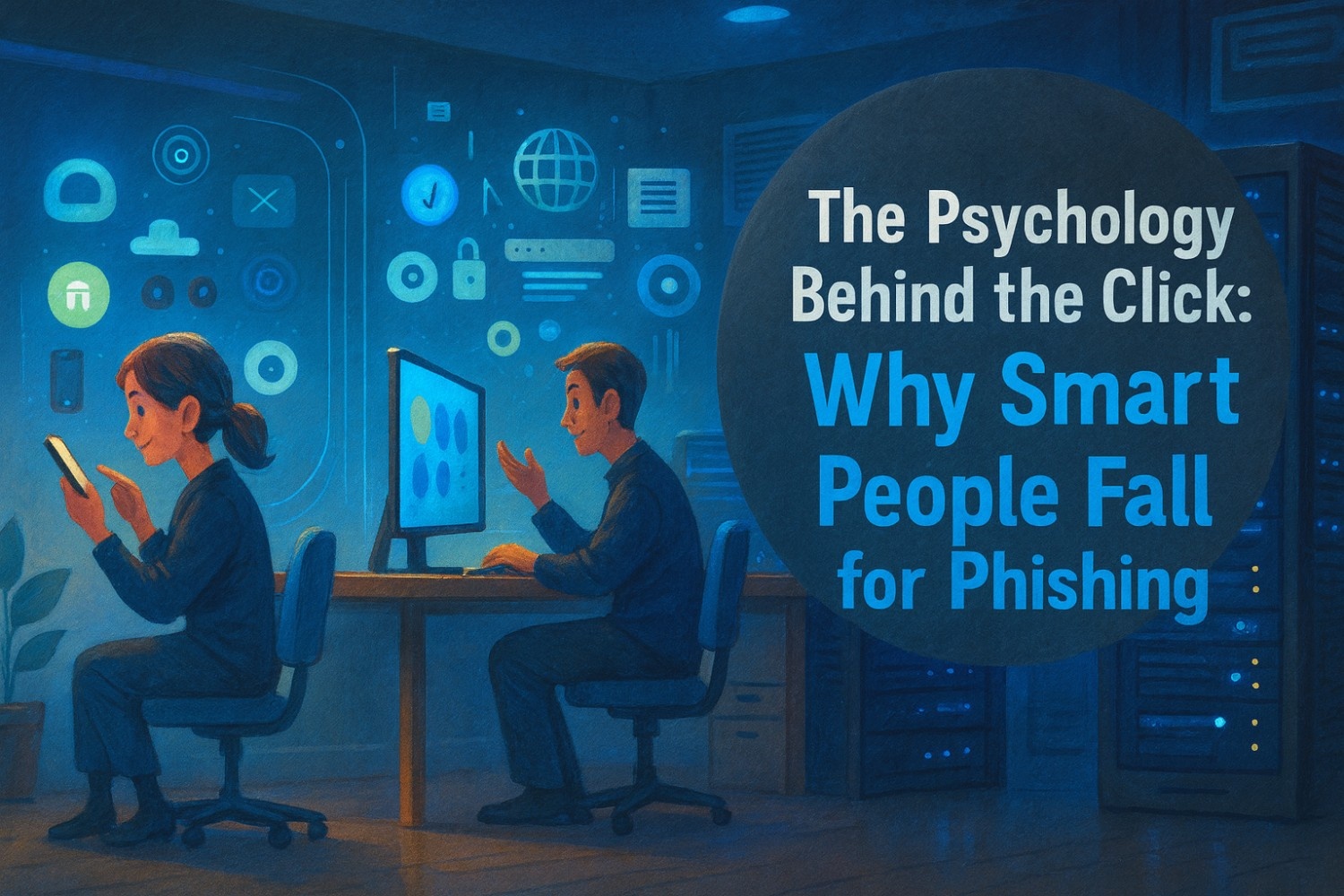
Psychology Behind The Click
One email.
One moment of distraction.
One perfectly timed message.
That’s all it takes for a phishing attack to land.
And often, it’s not the careless who fall for it, it’s the high performers, the fast decision makers, the trusted leaders.
Phishing isn’t a technical problem alone.
It’s a psychological strategy, designed to target how humans think, respond, and move through a busy day.
Psychology Behind the Click Reveals Why Even Smart People Fall for It
These messages aren’t obvious. They’re engineered to blend in.
Attackers use social cues, visual familiarity, and emotional timing to get through even the best defenses.
Here’s why they work:
- Cognitive fatigue: When inboxes are full and tasks are stacked, decisions get rushed.
- Authority imitation: Messages that appear to come from HR, IT, or leadership carry influence.
- Sense of urgency: Time sensitive language causes fast reactions, not critical ones.
- Reward framing: Curiosity spikes when messages hint at documents, packages, or payments.
The issue isn’t intelligence. It’s the psychology behind the click.
It’s that the brain is wired to react first, then process.
Psychology Behind the Click Shows How Phishing Outsmarts Instincts
You can roll out every best practice:
- Security training
- Email banners
- Auto-reports
But that one message disguised just well enough can still get through.
When someone clicks, it’s not failure.
It’s proof the message was designed to work.
So What Does Work?
To counter phishing tactics, your cybersecurity strategy must build mental habits, not just technical protocols.
Here’s how to shift from reaction to resilience:
1. Teach a Habit of “Pause and Review”
Encourage every employee to take a beat especially when something feels just slightly off.
2. Use Realistic Training Examples
Show real screenshots, red flag patterns, and messages based on your actual internal style.
Not sanitized mock-ups actual lookalikes.
3. Make Reporting Easy and Encouraged
No fear. No shame.
Every “this looks weird” report helps improve team awareness.
Celebrate submissions even false alarms.
This Is a Culture Shift Not a Checklist
Cybersecurity isn’t just about firewalls and passwords.
It’s about how your people think, respond, and communicate especially under pressure.
The phishing landscape evolves fast.
But the right habits evolve with it.
Final Takeaway
Smart people don’t fall for phishing because they’re careless they fall because attackers understand psychology.
The best defense? A team that doesn’t just know better, but acts on it.
If you’re looking to strengthen your human firewall, let’s connect.
We’re happy to walk you through practical ways to reduce everyday risk.
Schedule a quick, no pressure call to get started:
Book a time that works for you
